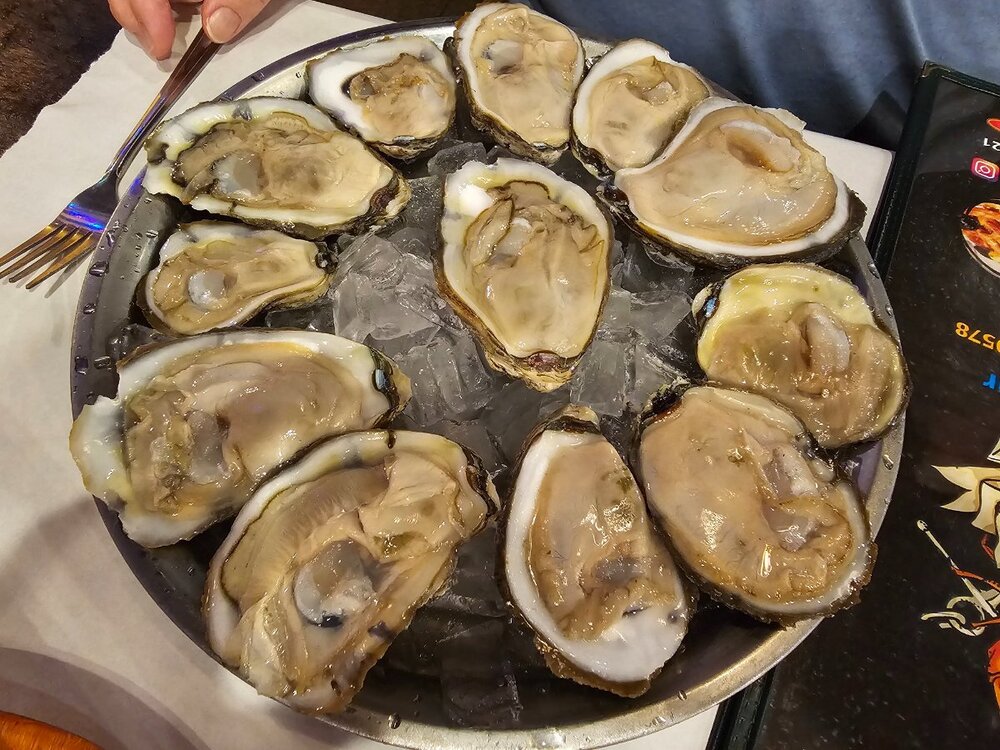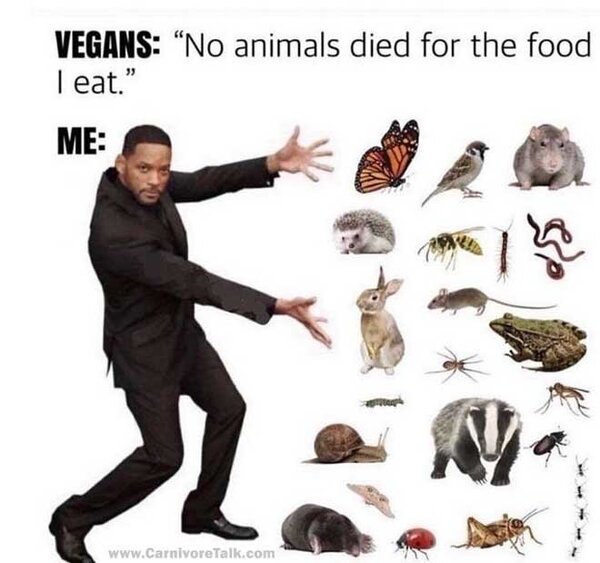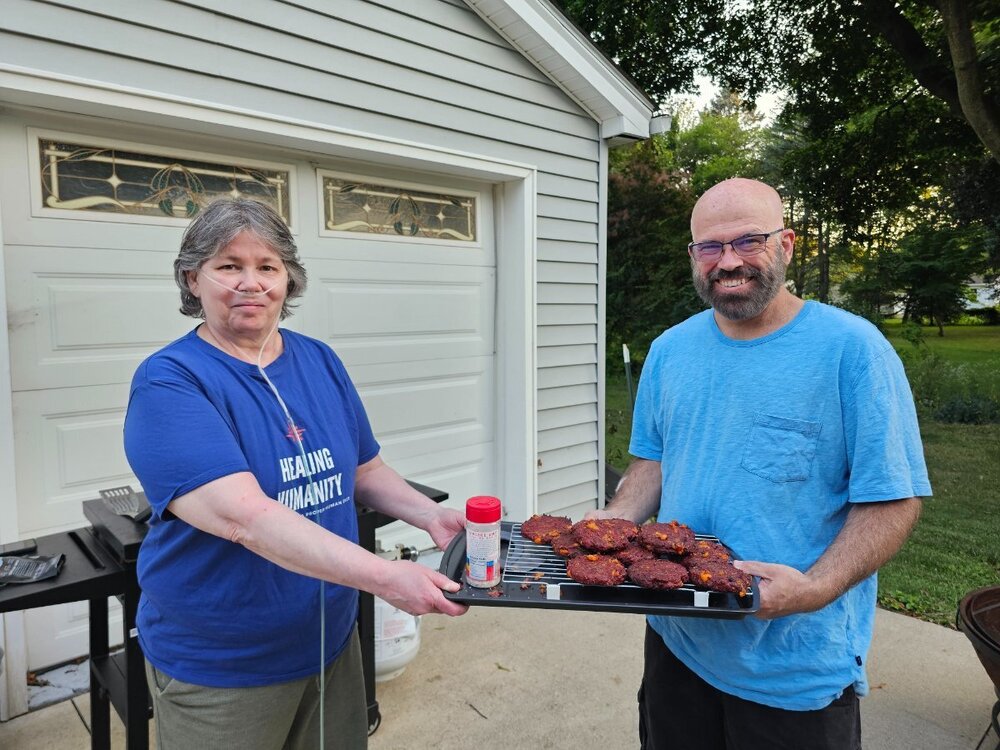Everything posted by Bob
-
Carnivore and blood sugar
A couple things could be going on here. For starters, when do you measure your blood glucose to get those readings? 1) Is it in the morning? You might be experiencing what's called the "dawn phenomenon", when a person's body will ramp up glucose levels to help you start your day. You might get a more accurate reading by fasting for a few more hours after waking up before taking your reading. 2) It is after a meal? Regardless of what you eat, when you eat a meal, your blood glucose will go up. 3) Are you eating processed or marinated meats? Look out for "carb creep". Which brings us to... 4) High protein consumption. If you are eating a high protein, moderate to low fat diet, your body will convert that protein to glucose for fuel. Your basically not in ketosis or burning ketones. You will want to increase your fat macros and maybe lower your protein macros. And finally... This can vary per individual and is very common if you are diabetic. Certain individuals will have a much higher sensitivity to protein and will have a greater glucagon release in response to high protein consumption. Fortunately, this is not thought of to really be an issue.
-
What Did You Eat Today?
Pic for attention, lol. This was a few weeks ago. I took my parents out to A Plus Crab in Cuyahoga Falls, which is a seafood boil restaurant. These were the raw oysters I got as an appetizer. My dad got me into these. Totally delicious and chock full of Omega-3's, vitamins, and minerals. On Saturday I attended a graduation party. I had a chicken breast and Italian sausages. And then Sunday, a family reunion on my wife's side, where I was able to have hot dogs and hamburger patties. I was able to make it work, but had to put up the palm ✋ when people would say "Aren't you gonna have any cAkE??"
-
Greetings from N.W. Arizona
Keep up the fine fight, even when the struggle is real. The clearly visible benefits demonstrate that you are on the right path. I would maybe, at the present time, look at seasonings and garnishes that help make the meat more palatable. Since you have no real health issues, you probably don't have to be super strict. You can be "carnivore-centric" and still reap the benefits if you're not particularly sensitive to certain things.
-
Very high cholesterol
Not usually. It's common for cholesterol to go up on a carnivore diet, especially if you have been losing weight. Cholesterol trapped in your adipose tissue gets released into the blood stream and you use up your own body fat, causing levels to rise. You HDL and trigs are beautiful, and these numbers are more important.
-
Seeing is Believing! My Amazing Carnivore Diet Results! [Video/Podcast]
Yeah, weight loss isn't linear. Even now, I had bottomed out at 174 in November and then purposely stopped my weight loss over a health scare, and now I am averaging 179.
- Post a picture... Any picture
-
Cholesterol
Remember that your cells are using fat for energy instead of glucose. Fat needs to be transported in the blood inside lipoproteins (because fat can't mix with water/blood). So it is only natural that your cholesterols would increase when you are fat adapted.
-
Greetings from a Newbie
That sounds brilliant. I might just make some homemade electrolytes and do the same.
-
Greetings from a Newbie
Welcome aboard @Jughead. We're glad you are here. And we're happy to help set things straight for you.
-
Do you have a tried and true go to food that has rarely wavered?
I'm getting more interested in this. The lady I met down the street does this. She's even offered for me to come down and use her equipment. I agree. When I make my NY Strips inside, I will trim a strip of the fat and fry it so that it's crispy. Absolutely delicious!
- What Did You Eat Today?
-
"No animals died for the food I eat."
This is something I never even thought about until it was brought to my attention. Now I see it as a double-standard when someone wants to argue in favor of veganism on ethical grounds.
- Real Life Meat-ups
- Layne Norton Should Be In Prison For Saying That "Seed oils aren't inflammatory"...
-
What Did You Eat Today?
Oh for certain, especially at the Mexican restaurant. Or even the Hibachi ones where they grill it in front of you, you can literally watch them squirt the oil on it. I eat out so very little that I don't even ask if they cook in seed oils or butter. I'm personally not that sensitive at the current time, and it's the chronic consumption of these that lead to improper Omega-6 to Omega-3 ratios. Well I hope not, because I did eat the green peppers and onions, lol. But I'm usually strict carnivore. The next potential dates for having to compromise is potentially eating out after an even August 2-4, and then again on my Florida vacation at the end of August. -- Last night was hamburgers. And, my wife is slowly coming around. She has been trying hard to do mostly keto the last few days.
-
Real Life Meat-ups
I got to meet a fellow carnivore the other day. This is Jan. She is also a member in Dr. Berry's community. We are both members at the "Vital Supporters" level. Turns out, she lives within walking distance of me. She contacted me and invited me down to meet in person and made my wife and I some smoked patties consisting of meat she ground herself and mixed with brisket, bacon, and cheddar cheese. We took this picture of our first meeting, and plan on getting together again for some more outdoor cookin' 🙂
-
Layne Norton Should Be In Prison For Saying That "Seed oils aren't inflammatory"...
Things that Layne missed... Seed oils are are not part of a natural human diet, as these heavily ultra-processed oils were not in existence before the 1900's (ish). They are easily oxidized. They are high in Omega-6 and low in Omega-3. They are in everything, which is why our Omega-6 to Omega-3 ratio is so out of balance that it leads to an inflammatory state. They are even worse when heated. A little bit in your ranch dressing here and there probably won't hurt you, but when you cook every meal with it, and every baked good sitting on the store shelves has been cooked with it, and every restaurant is deep frying with it, the cumulation of all this leads to inflammation and poor health. It's way deeper than just one's fat mass they are carrying around.
-
Hunger is different
Congratulations on your progress! 🙂
-
(UK) Where do you source your meat?
I will say that mixing meats sometimes does wonders. Mix together beef, bacon, sausage, eggs, chicken, etc, or any combination thereof together and it does make for a tasty dish that breaks the monotony of just eating one thing all the time.
-
What Did You Eat Today?
Yesterday I was with my family and some of my wife's extended family and ended up having to eat at a Mexican restaurant that I hadn't been to before. I was able to make things work (ketovore) with a dish that was ribeye, chicken, shrimp, scallops, and chorizo on a sizzling skillet with some peppers and onions. I had that and passed the rice and beans off to another relative. This was at like 3 in the afternoon, and I ended up not being hungry the rest of the day.
-
What Did You Eat Today?
I remember those. Quite tasty, lol. While I avoid beer 99.9% of the time now (I've had maybe 3 in the last 12 months). I still have some bourbon once a month at Open Mic night, or perhaps some hard liquor with no carbs added to a Diet Sprite or Diet Coke. I've got a lot of bottles of this or that here and home collecting dust, and I even think some of it is going bad.
-
Nuts and nut butters
Sounds like you are the right track. Dr. Berry says to eat BBBE (beef, butter, bacon, and eggs) and Dr. Kiltz will say to eat BEBBIS (beef, eggs, bacon, butter, ice cream*, and salt). *homemade ice cream thats just cream and egg yolks, no sugar. Some people don't do well with dairy. Most people are fine with it and odds are so are you, but that would be the next thing to nix in your personal N=1 experiment. If you are based in the USA and there is a Labcorp near you, you can get cheap bloodwork at www.OwnYourLabs.com and check your inflammation markers. Totally unnecessary but I like to geek out on that stuff, lol.
-
Hunger is different
When I get hungry on carnivore, it's basically an empty feeling and I know I want to eat. When I would get "hungry" on carbs, I would be starving, ravenous, and nauseous, and felt like I was going to drop dead of starvation if I didn't eat something soon.
-
Hello everyone! New here. Terrible Anxiety
Yes indeed. I have to take electrolytes at bedtime so as not to have cramps. I really struggle to balance my minerals due to my CKD.
-
Cholesterol
Also remember that when you are actively losing weight, your LDL will go up. There is cholesterol in your adipose tissue that gets released into the blood stream as you use that stored fat for energy. When you are eating a ketogenic diet, you are relying on fat for energy. LDL is what transports that fat to your cells. I would be wary of a lipid panel until you had at least 90 days of being weight-stable. And 180 would probably be better.







